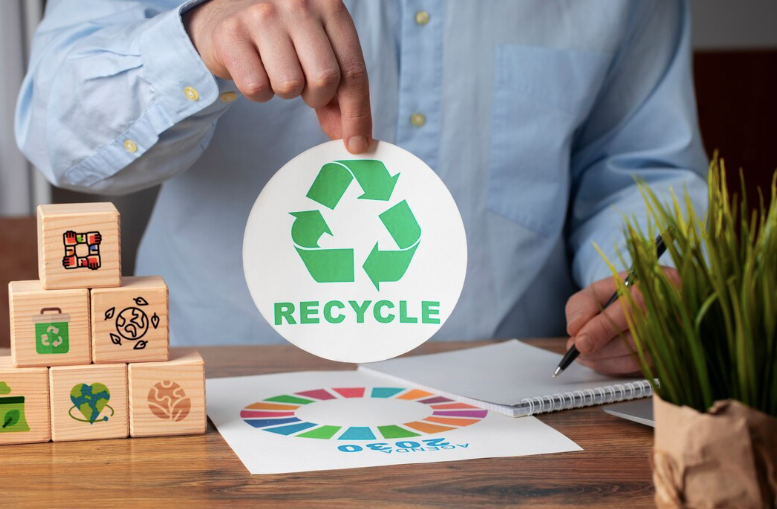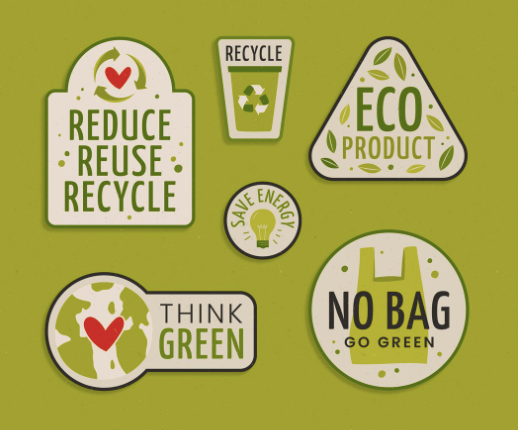

Eco-labels have become a defining feature of modern commerce, reshaping how consumers perceive brands and make purchasing decisions. As sustainability shifts from a niche interest to a mainstream expectation, these labels function as shortcuts that help buyers navigate complex claims and overwhelming product choices. But their influence goes far beyond a simple logo on packaging—they connect psychology, transparency, and brand credibility.
This article explores how eco-labels shape consumer trust, why they matter in the crowded world of sustainable marketing, and how brands can use them effectively to build genuine loyalty rather than superficial appeal.
Eco-labels matter because they give shoppers something concrete to rely on in a world full of environmental claims. With countless brands promoting themselves as “green,” “clean,” or “sustainable,” consumers often feel confused or skeptical. Eco-labels help cut through that noise by offering verified proof—something that feels official, consistent, and rooted in standards. When customers see a certification symbol, they interpret it as a promise backed by assessment, auditing, or scientific evaluation.
At the psychological level, eco-labels reduce uncertainty. People want to make responsible choices but don’t always have the knowledge or time to evaluate a product’s full environmental impact. Instead of researching materials, manufacturing processes, or supply chain ethics, they rely on recognized labels as a mental shortcut. This cognitive simplicity is one of the biggest reasons eco-labels hold so much power.
While sustainability claims are everywhere, not all of them inspire confidence. Many consumers now distrust statements like “eco-friendly,” “natural,” or “green” unless there is credible evidence behind them. This skepticism grows stronger each year due to greenwashing scandals where brands exaggerated or misrepresented their environmental efforts.
Eco-labels help counter this skepticism by offering third-party validation. When the label comes from a reputable organization that enforces strict standards, consumers feel reassured that the brand is not simply making empty promises. This contrast between unverified claims and certified credentials is one of the strongest drivers of consumer trust.
Eco-labels function as trust signals in the same way safety seals, certifications, and awards influence buying decisions. They indicate that a product has passed evaluation, adheres to criteria, and demonstrates measurable environmental responsibility. Because these signals are instantly recognizable, they reduce the cognitive burden on consumers who want assurance without reading extensive information.
Trust signals work especially well with products that are:
In these scenarios, eco-labels help customers feel confident that they’re making the right choice.
Eco-labels influence consumer emotions by converting uncertainty into clarity. For example, a shopper may wonder whether a fabric is sustainably sourced or whether packaging is truly biodegradable. A verified eco-label answers those questions instantly. This not only builds trust but also strengthens the perceived integrity of the brand.
Consumers often associate certified products with:
Even when consumers are not experts in sustainability, the presence of a label subtly elevates their perception of the product’s value and legitimacy.
Human decision-making often relies on heuristics—mental shortcuts that allow people to make quick judgments without extensive analysis. Eco-labels operate as such heuristics. Instead of deeply evaluating technical details like carbon emissions, water footprint, or chemical composition, consumers rely on the credibility of the label provider.
This is particularly true for everyday purchases such as cleaning supplies, grocery items, skincare, or clothing. Eco-labels help shoppers feel good about their choices without expanding mental effort.
Buying sustainable products often brings a sense of moral satisfaction or alignment with personal values. Eco-labels amplify this emotional reassurance. When consumers see a trusted certification, they feel that their purchase contributes to a greater cause—protecting the planet or supporting ethical labor. This emotional dimension deepens loyalty and strengthens the relationship between consumer and brand.
Consumers trust eco-labels because they assume the certifying body is objective, independent, and more knowledgeable than the average shopper. Whether or not the shopper understands the certification criteria in detail, they believe that a credible organization has already evaluated everything on their behalf.
This perceived objectivity reduces suspicion and enhances acceptance. It shifts the conversation from “Can I trust this brand?” to “Someone qualified has verified this.”

These labels carry the highest level of trust because they come from accredited organizations with strict standards. They evaluate everything from materials and production processes to emissions and ethics.
Examples include:
Consumers view these labels as credible due to consistent criteria, audits, and transparency.
Certifications backed by national or regional governments also inspire strong trust. Shoppers believe regulatory oversight ensures accuracy and compliance.
These labels often influence purchases in categories like electronics, household goods, and agriculture.
Some industries create their own certifications. These can still be valuable, but their impact depends heavily on transparency. If the criteria are clearly communicated and evidence is provided, consumers may still trust them. However, vague or internal labels without third-party involvement tend to generate more skepticism.
With so many eco-labels available today, consumers sometimes feel confused or overwhelmed. Too many logos can create dilution, where shoppers are unsure which labels are legitimate and which are marketing tactics. This is why it’s crucial for brands to choose quality over quantity and avoid cluttering their packaging with unnecessary symbols.
Consumers often believe that eco-labeled products are better—not just more ethical. They assume higher quality, safer materials, or longer-lasting design. This perception increases willingness to pay a premium.
The premium varies by product category but follows a consistent pattern: the more a shopper identifies with sustainability, the higher the premium they’re willing to pay.
Not all eco-labels justify premium pricing. Consumers only accept higher prices when the certification comes from a reputable source. If the label appears suspicious or self-generated, the premium is often rejected.
To maintain pricing power, brands must:
Trust and transparency together justify higher pricing more effectively than labels alone.
Eco-labels reduce the perceived risk associated with trying a new product. They provide reassurance that the brand follows ethical standards and is less likely to misrepresent its quality.
For price-sensitive shoppers, labels are especially important because they justify choosing a product that might cost slightly more but feels safer or more responsible.
Products related to health, food, baby care, and home cleaning often generate more uncertainty because consumers worry about harmful ingredients or environmental damage. Eco-labels help reduce these doubts by signaling safety and responsibility.
Brands should avoid collecting as many eco-labels as possible and instead focus on those that align with their mission and audience. Quality labels with rigorous standards are far more meaningful than multiple low-value ones.
Many consumers don’t fully understand what certifications involve, so brands should educate them. Simple, clear explanations can make a huge difference.
Brands can add value by explaining:
Clear communication transforms labels from symbols into storytelling tools.
Transparency reinforces credibility. Brands can share behind-the-scenes details about sourcing, production, and sustainability practices. This strengthens trust and prevents consumers from assuming that labels are being used as superficial marketing.
Transparency can appear in:
When eco-labels appear alongside transparent messaging, trust naturally increases.
Some labels represent strict certification processes, while others are created internally by brands without external verification. Consumers may not always distinguish between them, but their trust depends heavily on credibility. Misusing or inflating eco-labels can backfire, creating distrust.
Greenwashing occurs when companies exaggerate environmental claims. Misusing eco-labels—especially self-declared ones—can lead to public backlash. Once trust is broken, rebuilding it is extremely difficult.
Eco-labels support trust but cannot replace genuine sustainability practices. If brands rely solely on certification logos without integrating real environmental responsibility into their operations, consumers eventually notice inconsistencies.
In eCommerce, eco-labels appear not just on packaging but also on product pages, images, descriptions, and comparison charts. Because online shoppers can’t physically inspect products, they rely even more on certifications as trust indicators.
Eco-labels are especially powerful for:
They provide quick visuals that help shoppers narrow choices and feel confident about their selection.
When eco-labels appear near pricing or product benefits, they reduce hesitancy at the moment of purchase. Customers feel reassured that the product aligns with their values and won’t cause regret later.
Labels paired with trust-building elements—reviews, transparent details, or sustainability metrics—often lead to higher conversion rates.
Eco-labels have evolved into essential trust-building tools in modern commerce. They help consumers navigate a complex landscape of environmental claims by offering verified assurance, objective evaluation, and emotional comfort.
When used well, eco-labels strengthen a brand’s credibility, increase willingness to pay, and reduce purchase hesitation across both physical and digital retail. Their influence goes beyond simple logos—eco-labels show responsibility, transparency, and alignment with customer values. As sustainability continues to shape consumer expectations, brands that adopt credible eco-labels and communicate them effectively will build stronger, more lasting trust in a competitive marketplace.